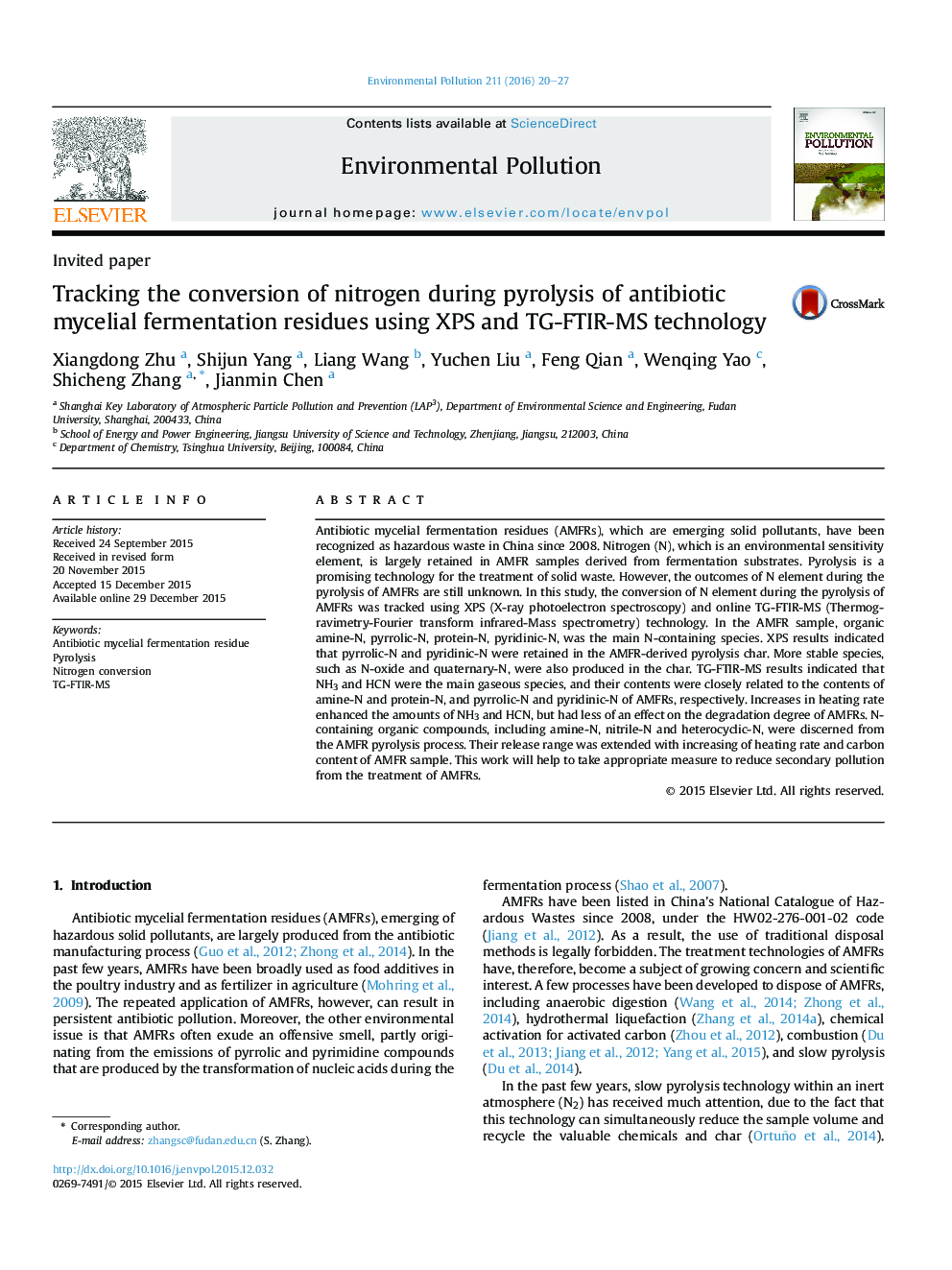| Article ID | Journal | Published Year | Pages | File Type |
|---|---|---|---|---|
| 6315459 | Environmental Pollution | 2016 | 8 Pages |
â¢Hazardous AMFR material was treated by slow pyrolysis reaction.â¢TG-FTIR-MS were used to study the N conversion for pyrolysis gas and bio-oil.â¢NH3 and HCN were observed as the main N-containing gas species.â¢XPS were used to study the N conversion for pyrolysis char.â¢Stable species, such as N-oxide and quaternary-N, were produced in the char.
Antibiotic mycelial fermentation residues (AMFRs), which are emerging solid pollutants, have been recognized as hazardous waste in China since 2008. Nitrogen (N), which is an environmental sensitivity element, is largely retained in AMFR samples derived from fermentation substrates. Pyrolysis is a promising technology for the treatment of solid waste. However, the outcomes of N element during the pyrolysis of AMFRs are still unknown. In this study, the conversion of N element during the pyrolysis of AMFRs was tracked using XPS (X-ray photoelectron spectroscopy) and online TG-FTIR-MS (Thermogravimetry-Fourier transform infrared-Mass spectrometry) technology. In the AMFR sample, organic amine-N, pyrrolic-N, protein-N, pyridinic-N, was the main N-containing species. XPS results indicated that pyrrolic-N and pyridinic-N were retained in the AMFR-derived pyrolysis char. More stable species, such as N-oxide and quaternary-N, were also produced in the char. TG-FTIR-MS results indicated that NH3 and HCN were the main gaseous species, and their contents were closely related to the contents of amine-N and protein-N, and pyrrolic-N and pyridinic-N of AMFRs, respectively. Increases in heating rate enhanced the amounts of NH3 and HCN, but had less of an effect on the degradation degree of AMFRs. N-containing organic compounds, including amine-N, nitrile-N and heterocyclic-N, were discerned from the AMFR pyrolysis process. Their release range was extended with increasing of heating rate and carbon content of AMFR sample. This work will help to take appropriate measure to reduce secondary pollution from the treatment of AMFRs.
Graphical abstractDownload full-size image
